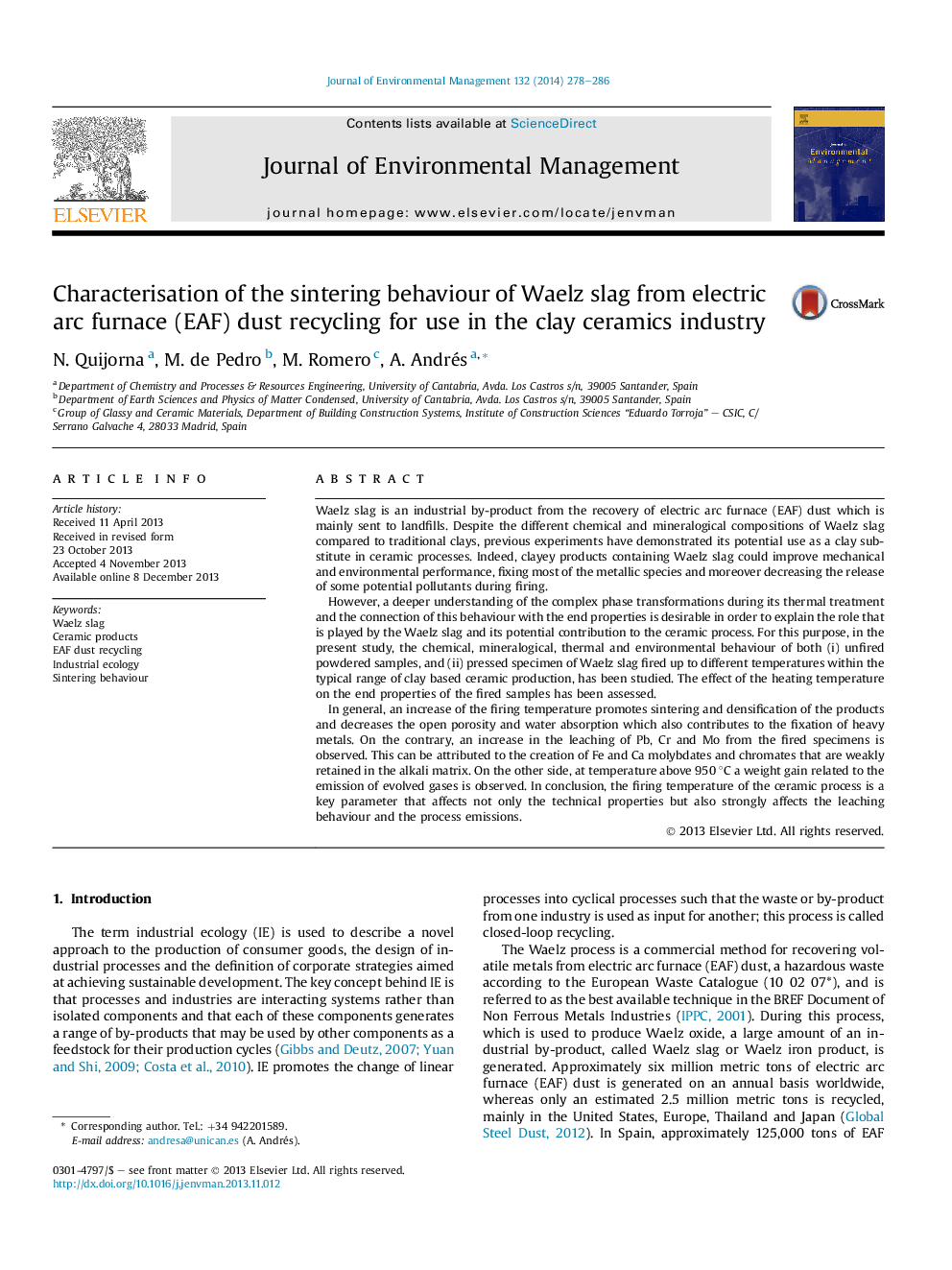| کد مقاله | کد نشریه | سال انتشار | مقاله انگلیسی | نسخه تمام متن |
|---|---|---|---|---|
| 1055804 | 1485280 | 2014 | 9 صفحه PDF | دانلود رایگان |

• Chemical, mineralogical, thermal and environmental behaviours of slag were studied.
• Network modifier oxides of slag enhance sintering by the formation of liquid phase.
• Thermal behaviour shows the oxidation of Fe(II) to Fe(III) compounds (250–750 °C).
• Physical properties of fired samples suggest that sintering begins between 950 and 1000 °C.
• A minor surface area implies lower Zn and Pb and higher Cr and Mo leaching values.
Waelz slag is an industrial by-product from the recovery of electric arc furnace (EAF) dust which is mainly sent to landfills. Despite the different chemical and mineralogical compositions of Waelz slag compared to traditional clays, previous experiments have demonstrated its potential use as a clay substitute in ceramic processes. Indeed, clayey products containing Waelz slag could improve mechanical and environmental performance, fixing most of the metallic species and moreover decreasing the release of some potential pollutants during firing.However, a deeper understanding of the complex phase transformations during its thermal treatment and the connection of this behaviour with the end properties is desirable in order to explain the role that is played by the Waelz slag and its potential contribution to the ceramic process. For this purpose, in the present study, the chemical, mineralogical, thermal and environmental behaviour of both (i) unfired powdered samples, and (ii) pressed specimen of Waelz slag fired up to different temperatures within the typical range of clay based ceramic production, has been studied. The effect of the heating temperature on the end properties of the fired samples has been assessed.In general, an increase of the firing temperature promotes sintering and densification of the products and decreases the open porosity and water absorption which also contributes to the fixation of heavy metals. On the contrary, an increase in the leaching of Pb, Cr and Mo from the fired specimens is observed. This can be attributed to the creation of Fe and Ca molybdates and chromates that are weakly retained in the alkali matrix. On the other side, at temperature above 950 °C a weight gain related to the emission of evolved gases is observed. In conclusion, the firing temperature of the ceramic process is a key parameter that affects not only the technical properties but also strongly affects the leaching behaviour and the process emissions.
Journal: Journal of Environmental Management - Volume 132, January 2014, Pages 278–286